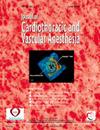Association of Oxygenation Targets and Mortality in Critical Care Patients Following Cardiac Surgery: A Retrospective Cohort Study
IF 2.3
4区 医学
Q2 ANESTHESIOLOGY
Journal of cardiothoracic and vascular anesthesia
Pub Date : 2025-03-03
DOI:10.1053/j.jvca.2025.02.053
引用次数: 0
Abstract
Objective
To investigate the relationship between arterial oxygen partial pressure (PaO2) and all-cause mortality of post–cardiac surgery patients.
Design
A retrospective cohort study based on the Medical Information Mart in Intensive Care-III (MIMIC-III) database.
Setting
The MIMIC-III database is a dataset comprising the clinical data of patients admitted to intensive care units (ICUs) at the Beth Israel Deaconess Medical Center.
Participants
Patients who underwent cardiac surgery under extracorporeal circulation.
Interventions
The patients were categorized into 4 groups based on PaO2 level within 24 hours of admission to the ICU after surgery. The primary outcome was in-hospital all-cause mortality. Both linear and nonlinear relationships between PaO2 and outcome were examined in the study.
Measurements and Main Results
During a 1-year follow-up, 296 patients (5.5%) experienced all-cause mortality, including 73 (1.4%) during hospitalization, 83 (1.6%) within 30 days, and 167 (3.1%) within 90 days. The restricted cubic spline regression model revealed a nonlinear relationship between PaO2 and in-hospital mortality (Poverall = 0.004; Pnonlinearity = 0.012). Subgroup analyses and sensitivity analyses were consistent with the primary analysis.
Conclusions
The relationship between PaO2 level and all-cause in-hospital mortality followed a J-shaped curve among patients following cardiac surgery. When PaO2 > 196.1mmHg, higher levels of PaO2 within 24 hours after cardiac surgery were associated with an increased risk of hospital mortality.
心脏手术后重症患者氧合目标与死亡率的关系:一项回顾性队列研究。
目的:探讨心脏手术后患者动脉血氧分压(PaO2)与全因死亡率的关系。设计:基于重症监护医学信息市场- iii (MIMIC-III)数据库的回顾性队列研究。设置:MIMIC-III数据库是一个包含贝斯以色列女执事医疗中心重症监护病房(icu)患者临床数据的数据集。参与者:接受体外循环心脏手术的患者。干预措施:根据患者术后入院24小时内PaO2水平分为4组。主要终点是院内全因死亡率。研究中检验了PaO2与预后之间的线性和非线性关系。测量和主要结果:1年随访期间,296例(5.5%)患者出现全因死亡,其中住院期间73例(1.4%),30天内83例(1.6%),90天内167例(3.1%)。受限三次样条回归模型揭示了PaO2与住院死亡率之间的非线性关系(总值= 0.004;非线性= 0.012)。亚组分析和敏感性分析与初步分析一致。结论:心脏手术患者PaO2水平与院内全因死亡率呈j型关系。当PaO2浓度为196.1mmHg时,心脏手术后24小时内PaO2浓度升高与住院死亡风险增加相关。
本文章由计算机程序翻译,如有差异,请以英文原文为准。
求助全文
约1分钟内获得全文
求助全文
来源期刊
CiteScore
4.80
自引率
17.90%
发文量
606
审稿时长
37 days
期刊介绍:
The Journal of Cardiothoracic and Vascular Anesthesia is primarily aimed at anesthesiologists who deal with patients undergoing cardiac, thoracic or vascular surgical procedures. JCVA features a multidisciplinary approach, with contributions from cardiac, vascular and thoracic surgeons, cardiologists, and other related specialists. Emphasis is placed on rapid publication of clinically relevant material.

 求助内容:
求助内容: 应助结果提醒方式:
应助结果提醒方式:


